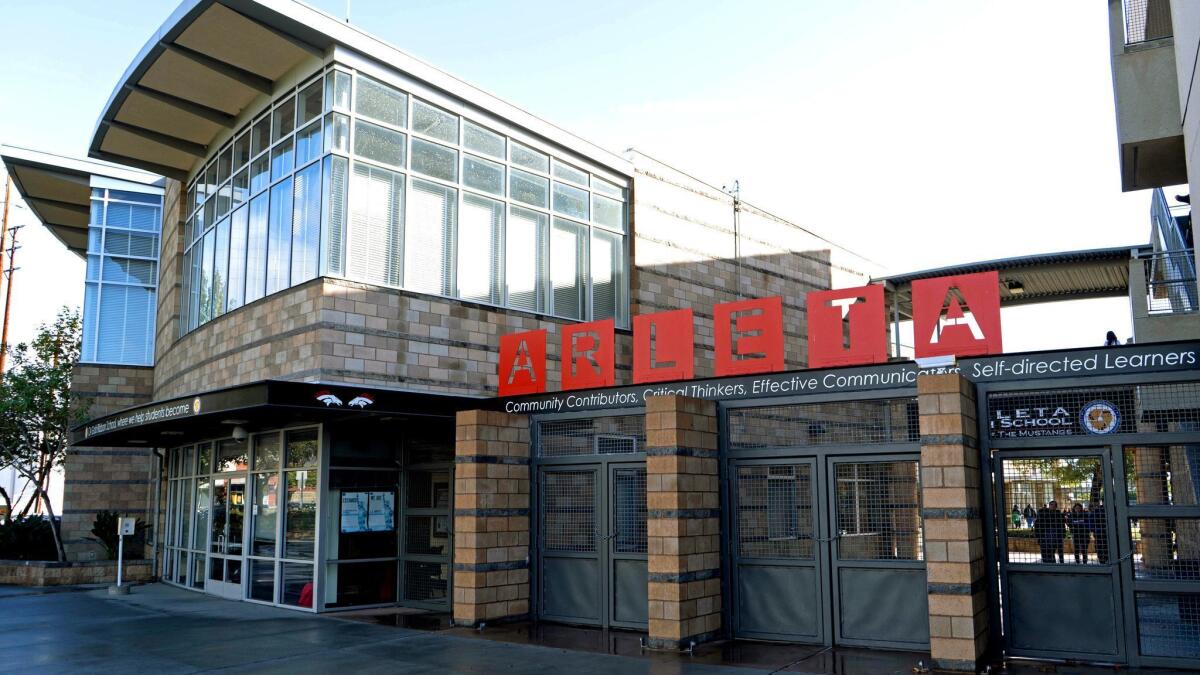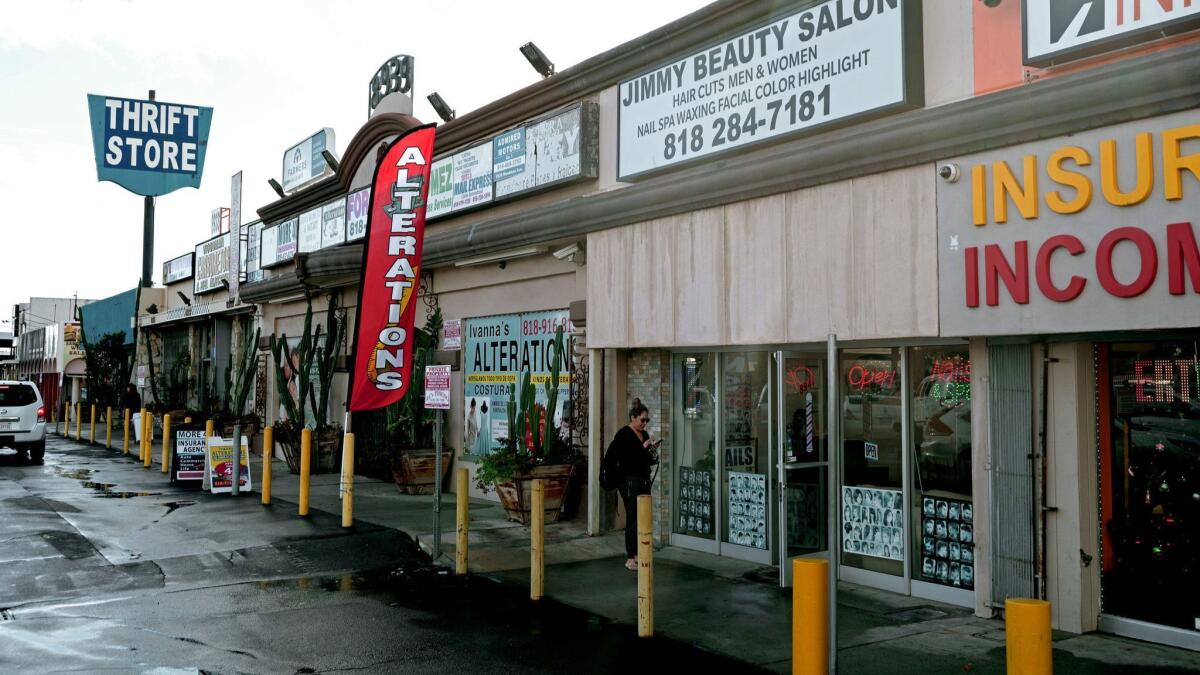Neighborhood Spotlight: Arleta offers affordable living and a small-town atmosphere

For most of its history, Arleta was an undeveloped portion of Pacoima, which had its own roots in the frenzied real estate speculation of the 1880s, after major railroads expanded into Southern California.
After a brief flurry of development — the vast majority of which occurred in the San Fernando Road corridor — the boom went bust in the 1890s. The western portion of Pacoima in particular saw very little residential construction throughout the late 19th and early 20th centuries.
Then the Los Angeles Aqueduct opened in 1913, bringing a vast network of irrigation channels, and the area became a center of agriculture in the San Fernando Valley. Newly planted citrus groves, interspersed with poultry farms and other livestock operations, soon carpeted the valley floor.
From the time of its annexation by the city of Los Angeles in 1915 until U.S. entry into World War II in 1941, the embryonic Arleta neighborhood remained semirural, with most residential development consisting of farmhouses and ranches.

But as the nation ramped up the war effort in earnest, aviation manufacturers rapidly expanded their operations in the Valley, with Lockheed in particular creating thousands of jobs in what was once a sleepy hinterland.
To provide housing for the assembly-line workers who built P-38 fighters and B-17 bombers at the company’s Burbank plant, developers began bulldozing the orange groves and chicken farms to make room for modest homes tailored to their purchasing power.
In what would become Arleta, that development came in two waves. During the war, the first wave of housing tracts was mostly confined to the narrow strip of land between Sharp and Arleta avenues. In the 1950s, as the region struggled to house its booming population, a larger wave saw the neighborhood built out to its current western border at Woodman Avenue.
While greater Pacoima developed during this period into a multiethnic neighborhood with sizable percentages of African American and Latino residents, its western portion remained primarily a white enclave.
The construction of the 5 Freeway in the early 1960s created a physical barrier between eastern and western Pacoima. Seeking to make the split official, residents west of the freeway formed their own breakaway neighborhood, which they named Arleta.
In the 1980s, as the Valley’s industrial base began to erode and many residents left to chase employment opportunities elsewhere, Arleta became much more diverse, and today shares the majority Latino demographics of Pacoima.

Neighborhood highlights
Where the dream of the ’50s is still alive: The sturdy, yet affordable homes built during the postwar boom are still making homeownership possible for working-class Angelenos.
Choose your commute: With easy access to the 5, 405 and 118 freeways, and a new Metro line on the way, Arleta makes a convenient, affordable home base for commuters.
Parks and rec: Although the neighborhood itself has little green space, nearby recreation facilities at Devonwood, Ritchie Valens and Hansen Dam parks offer a variety of outdoor activities.
Neighborhood challenges
Deindustrialization blues: The loss of aviation- and automobile-manufacturing plants in the Northeast Valley has been a severe and ongoing burden on the area’s economy.
Expert insight
John Seward of Seward Real Estate and Financial Inc. said recent state laws allowing residents to convert garages into granny units have been a boon for Arleta homeowners.
“There are mostly smaller lots here, but many have detached garages or carports. Now that people are allowed to convert those into secondary housing units, they can rent them out and make some extra income,” Seward said.
Arleta has become home to working-class families priced out of surrounding areas such as Burbank and Glendale. As home prices in the area start to slightly increase, he said, that opportunity for extra cash will help families weather the rising cost of living.
“They can go in, spend $20,000 to convert the garage and then make an extra $1,500 per month on rent,” Seward said.
On the business side of things, he added that Arleta is holding on to its stock of mom-and-pop shops, which gives the community a homier feel than the larger commercial districts that surround it.
Market snapshot
In the 91331 ZIP Code, based on 36 sales, the median sales price for single-family homes in October was $493,000, up 2.8% year over year, according to CoreLogic.
Report card
All five public schools in the Arleta boundaries scored above 700 on the Academic Performance Index. Two scored above 800: Vena Avenue Elementary at 890 and Canterbury Avenue Elementary at 801.
Sharp Avenue Elementary and Beachy Avenue Elementary scored 799 and 750, respectively. Arleta High, the area’s largest high school, scored 718.
Times staff writer Jack Flemming contributed to this report.






